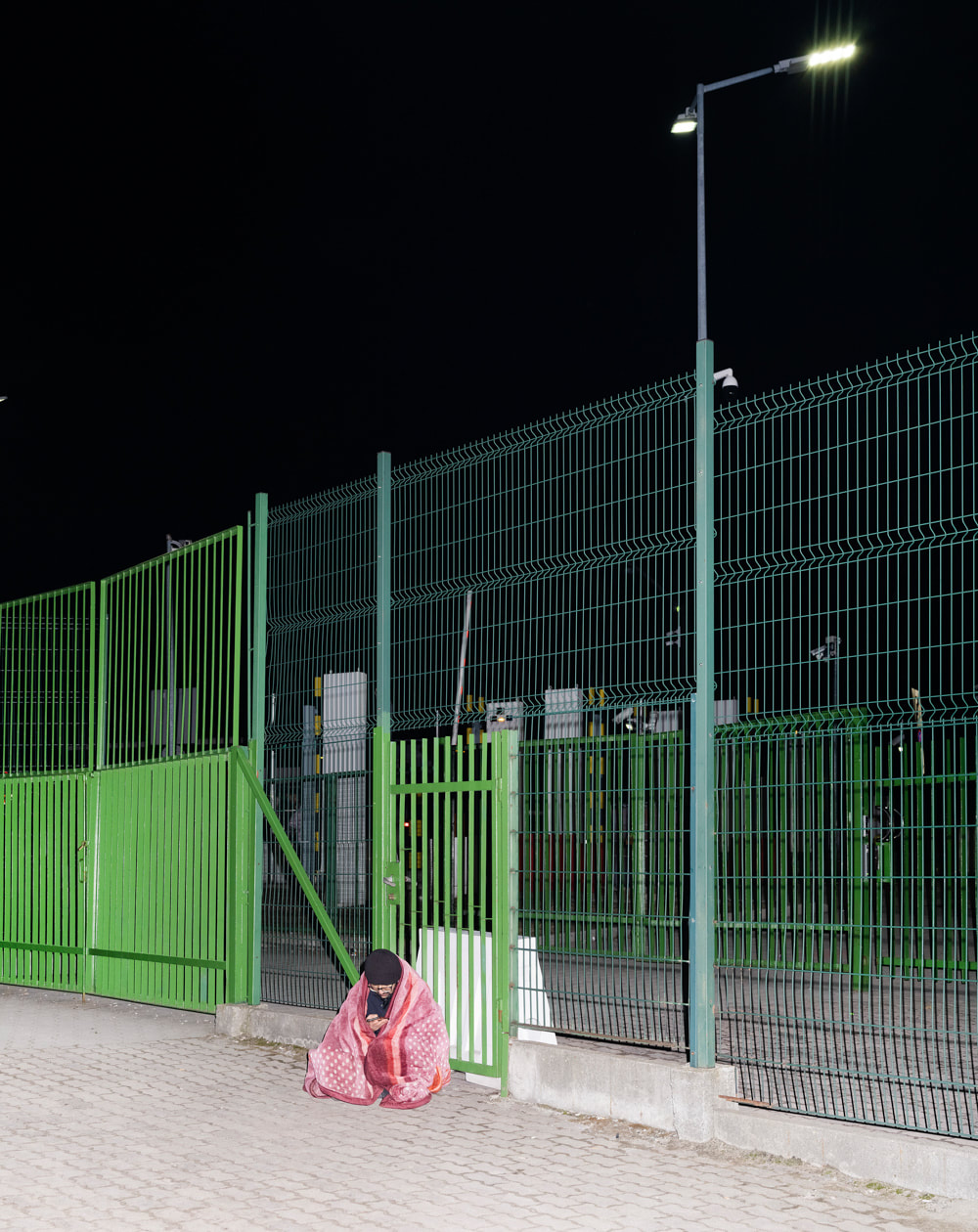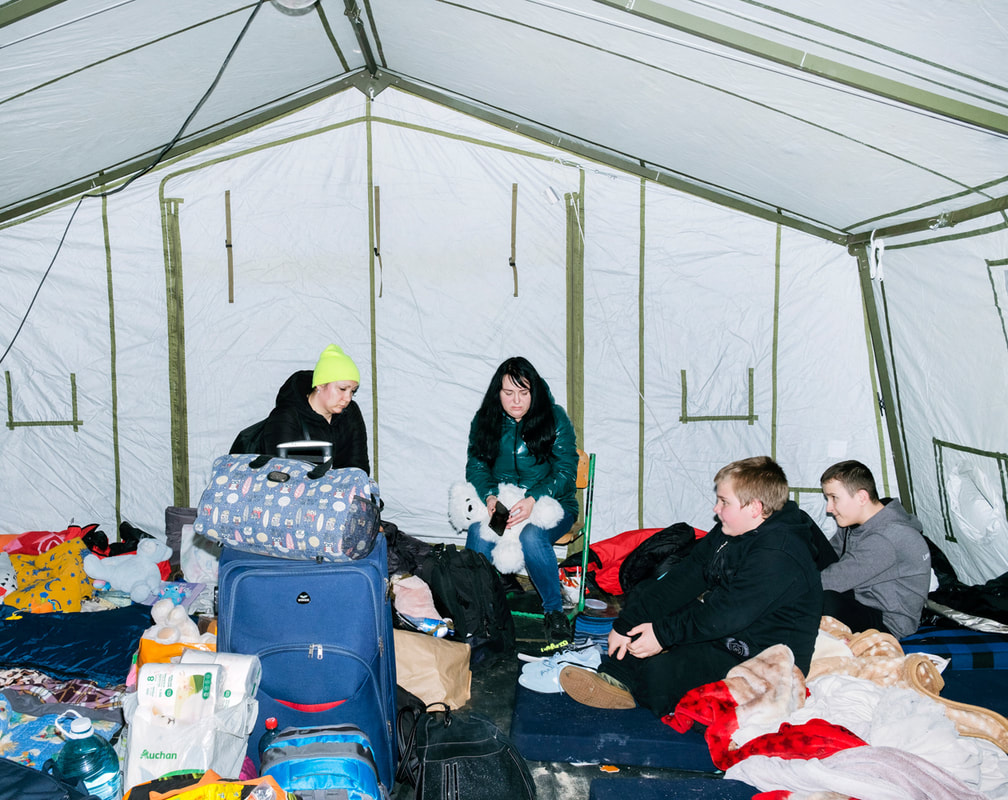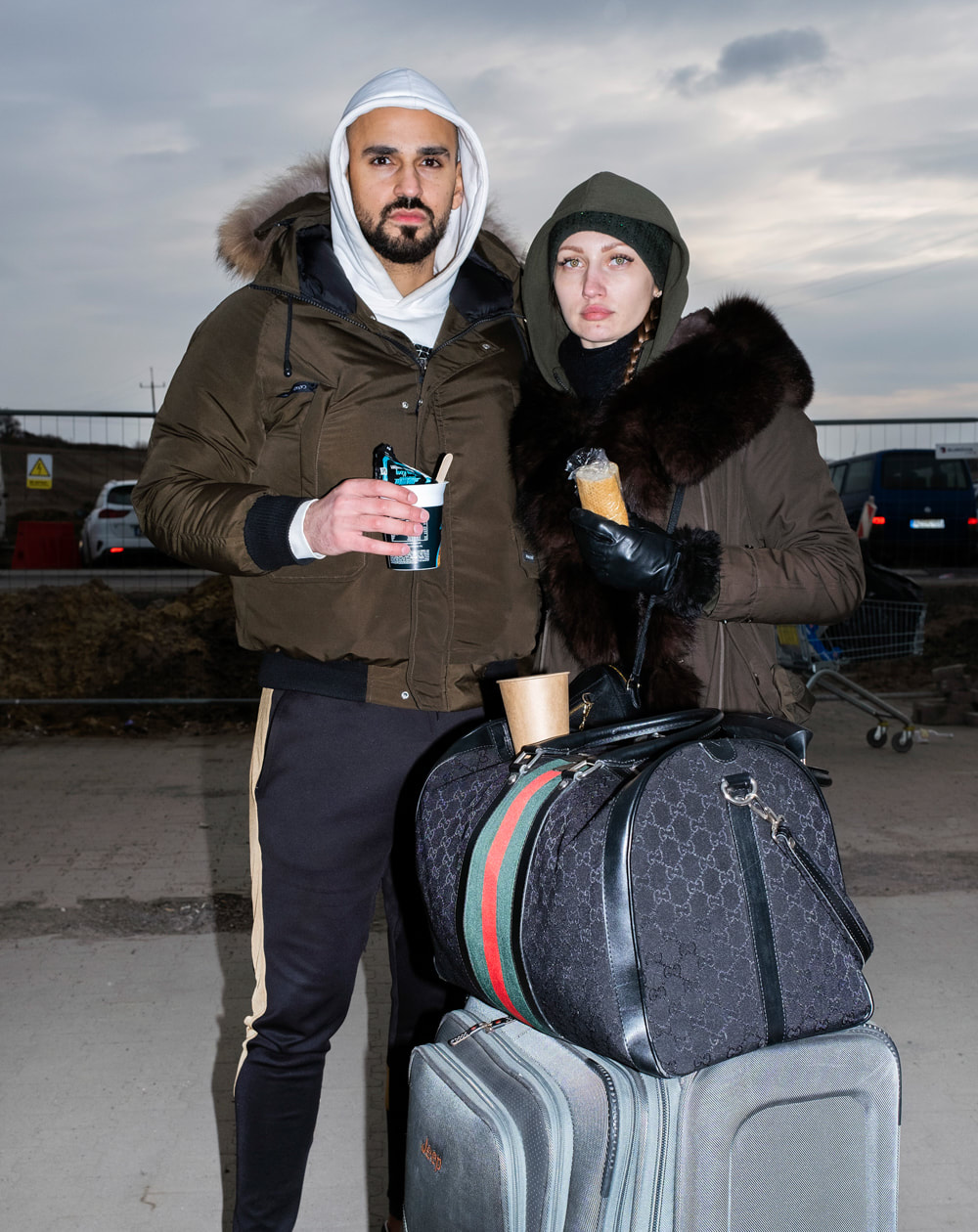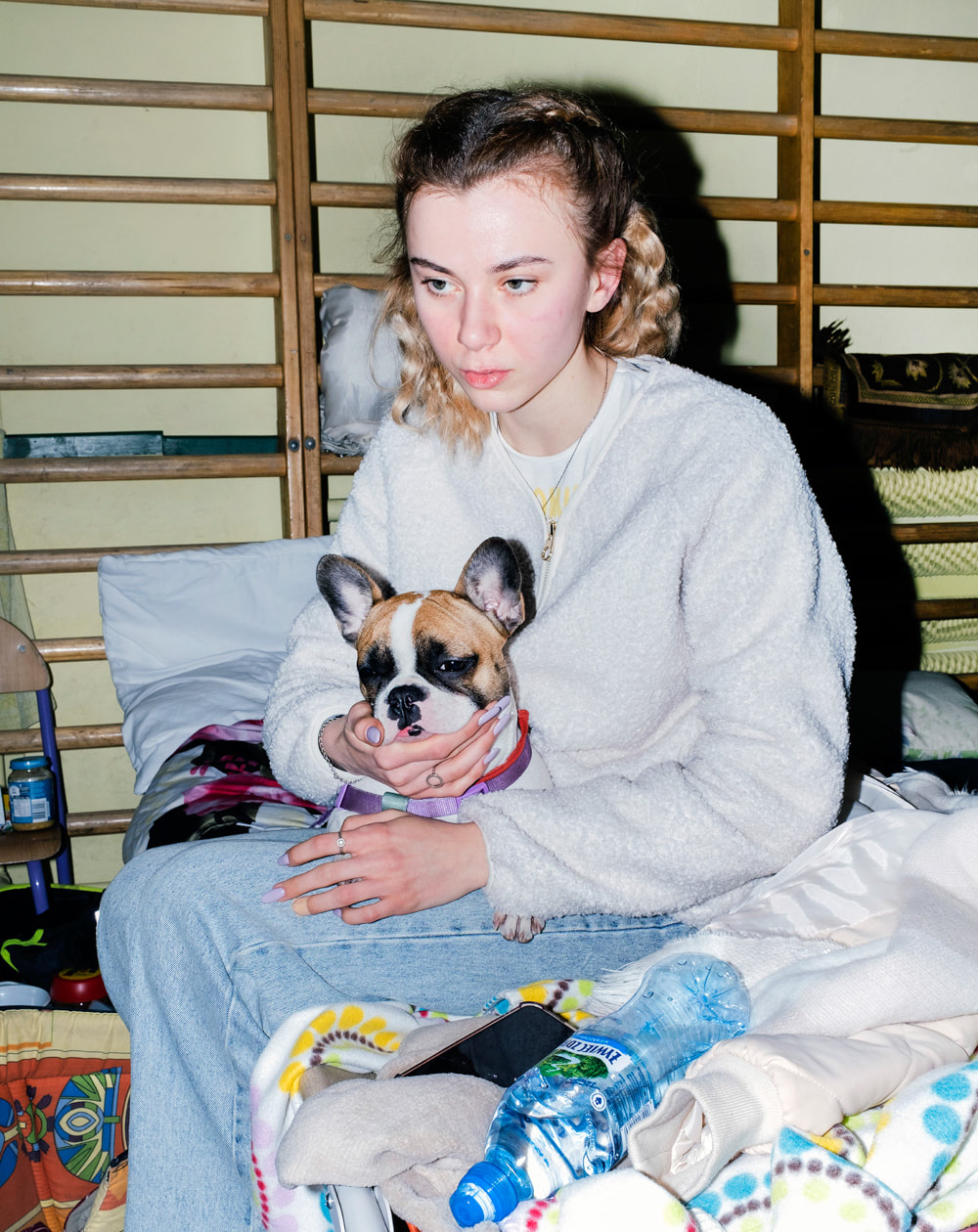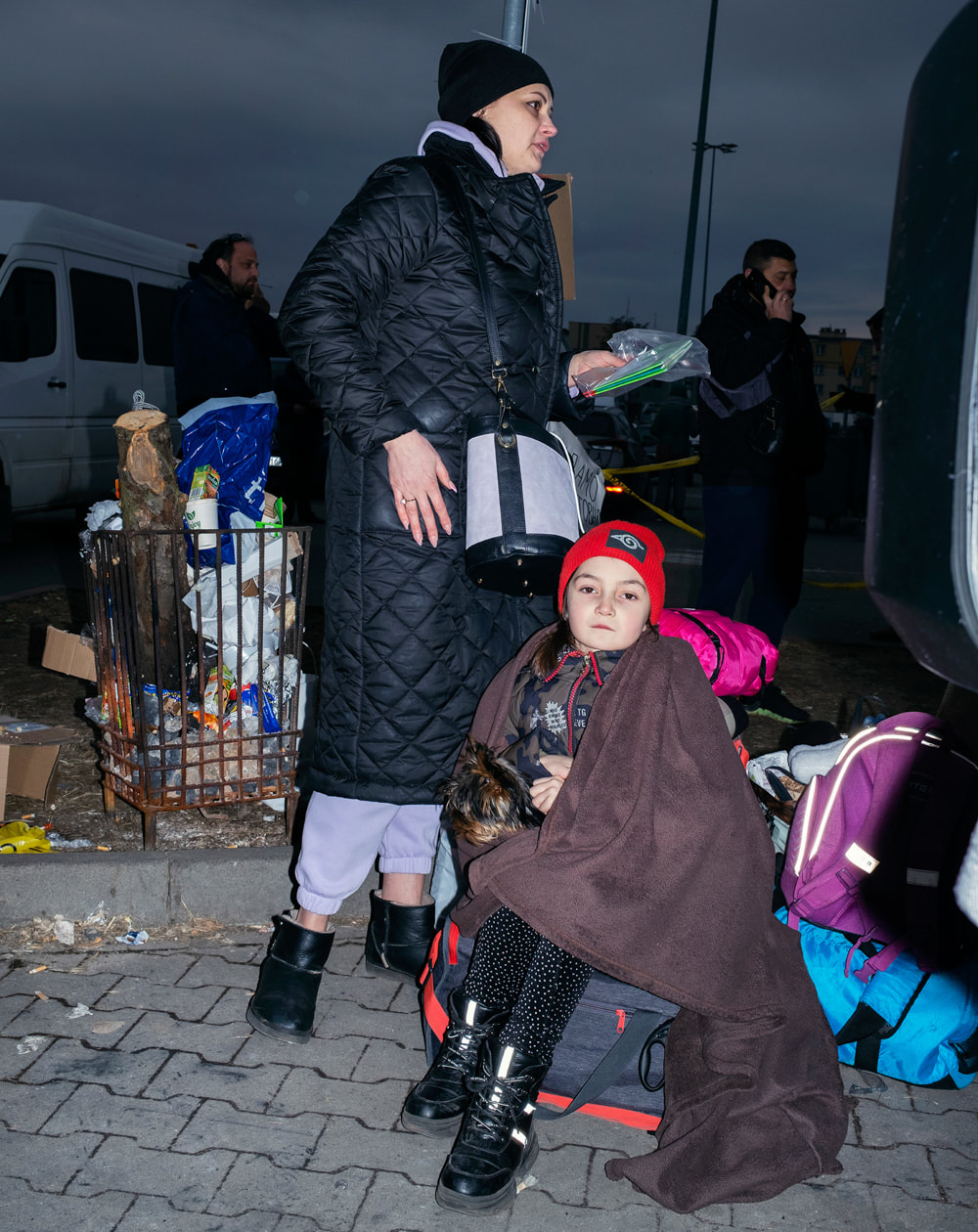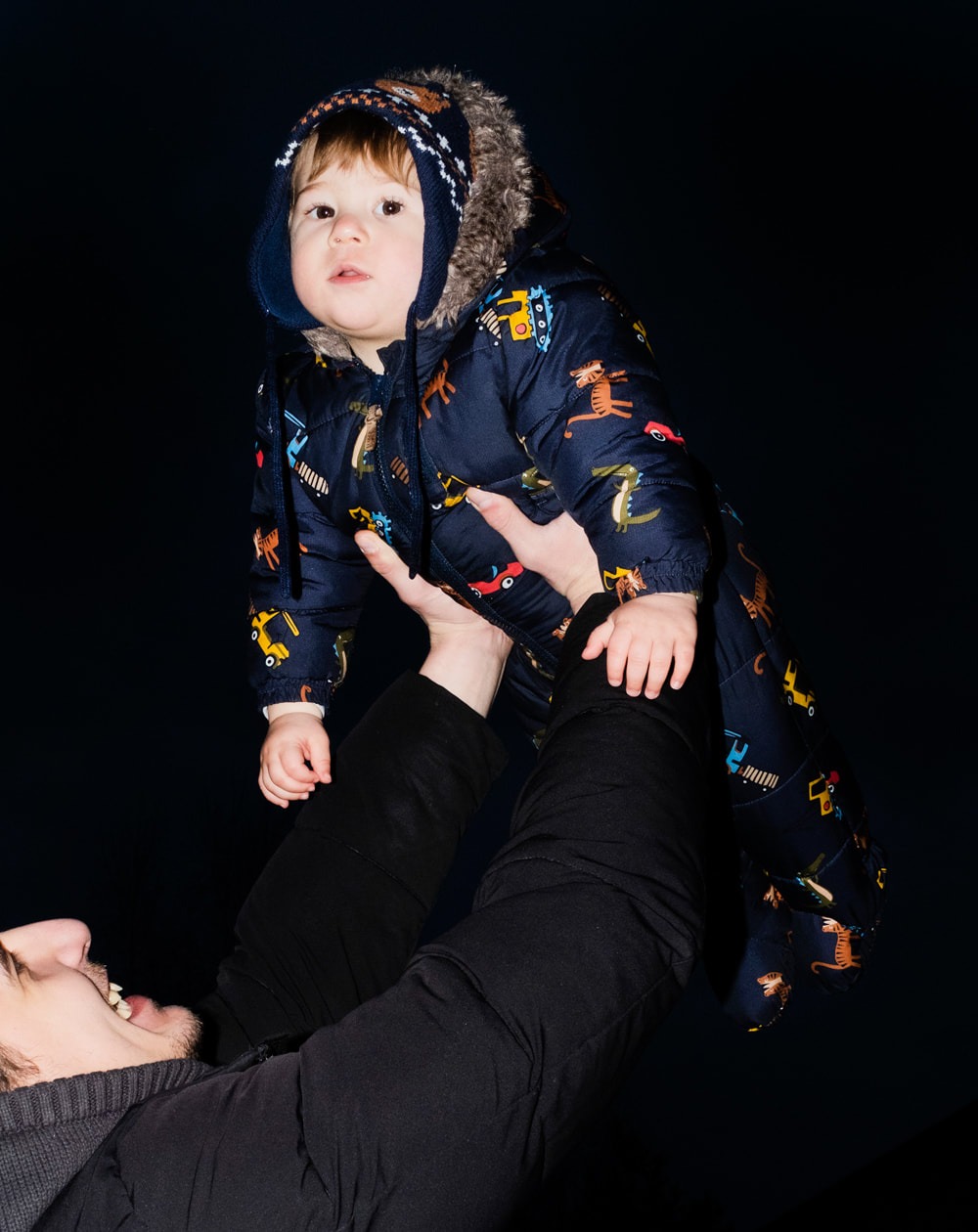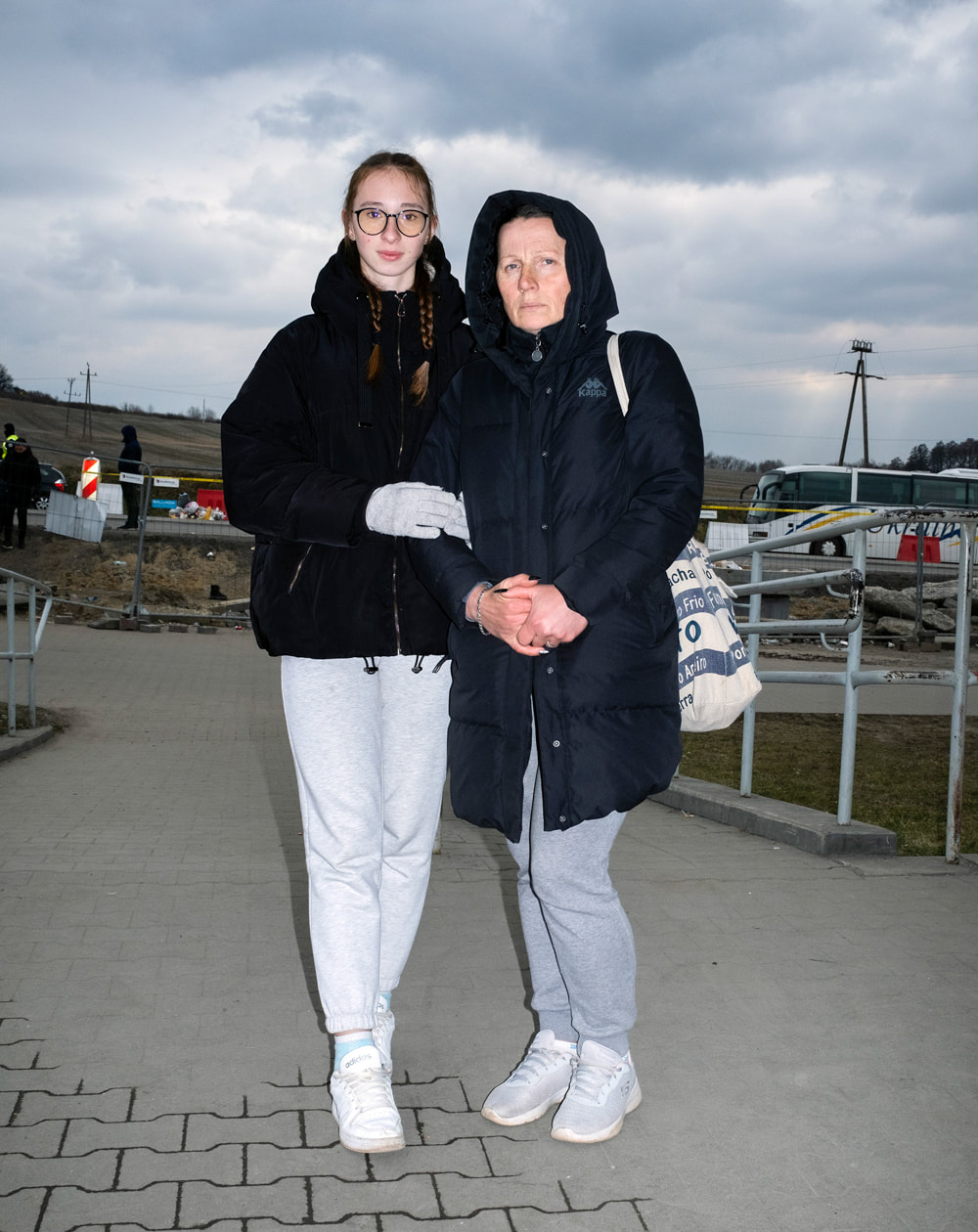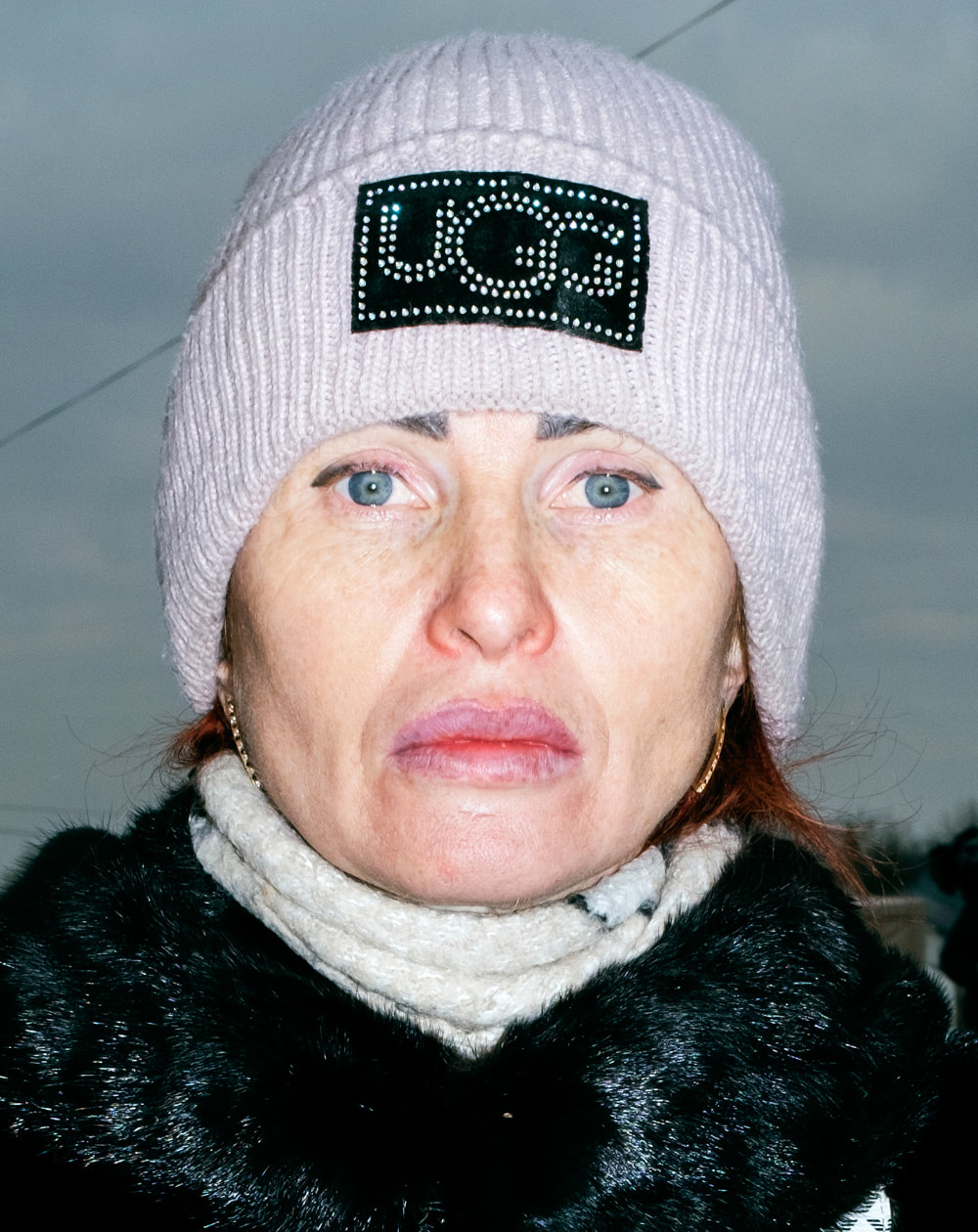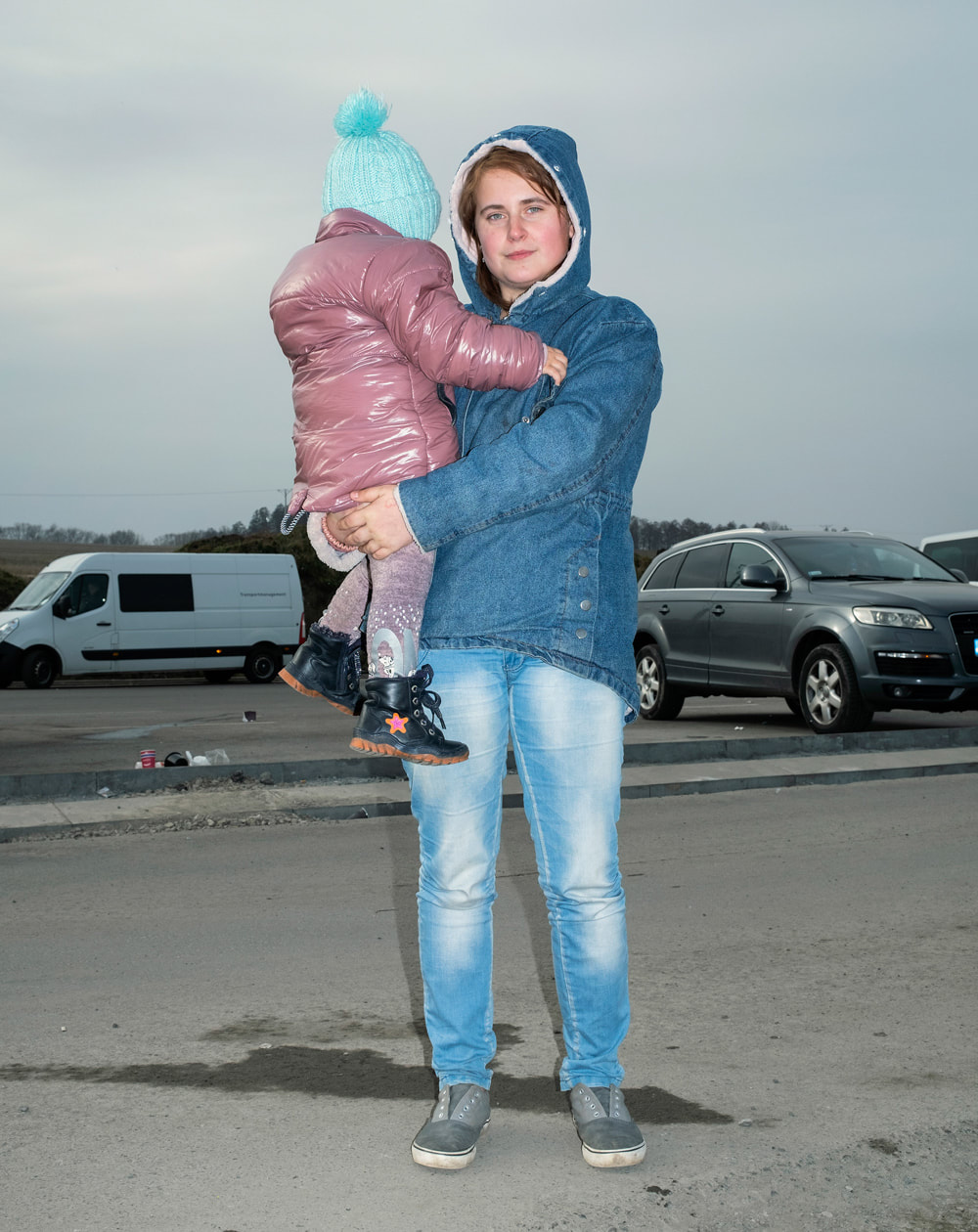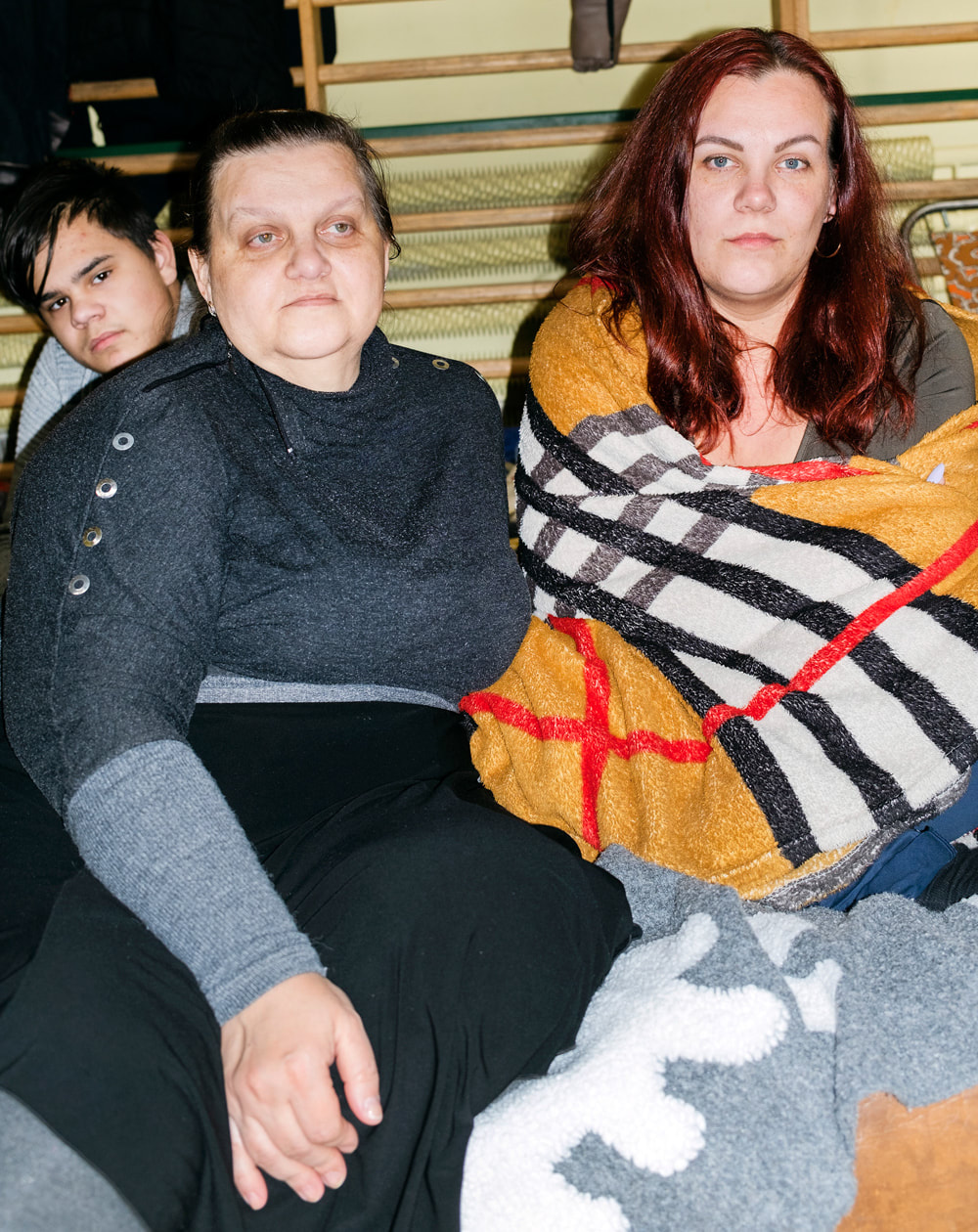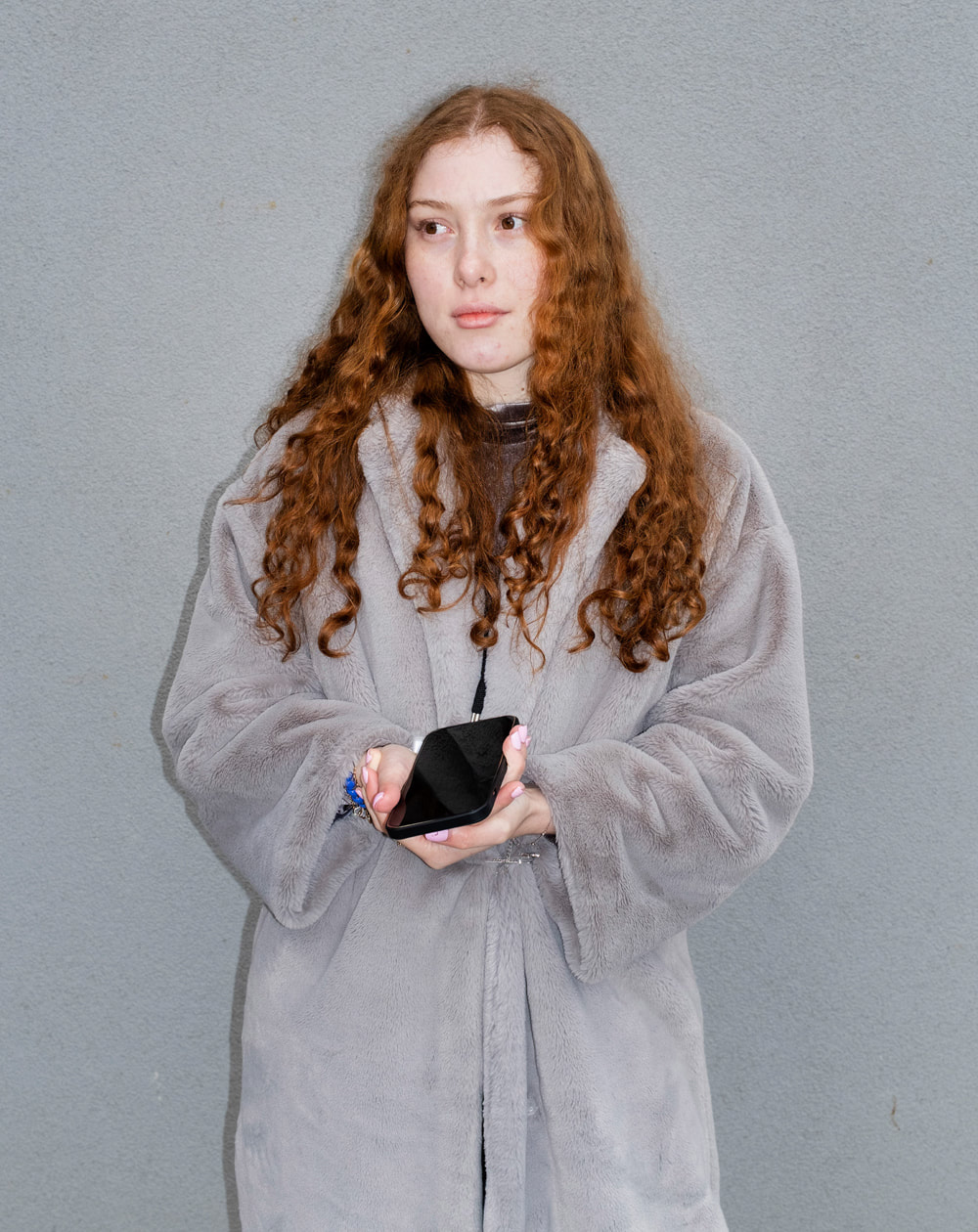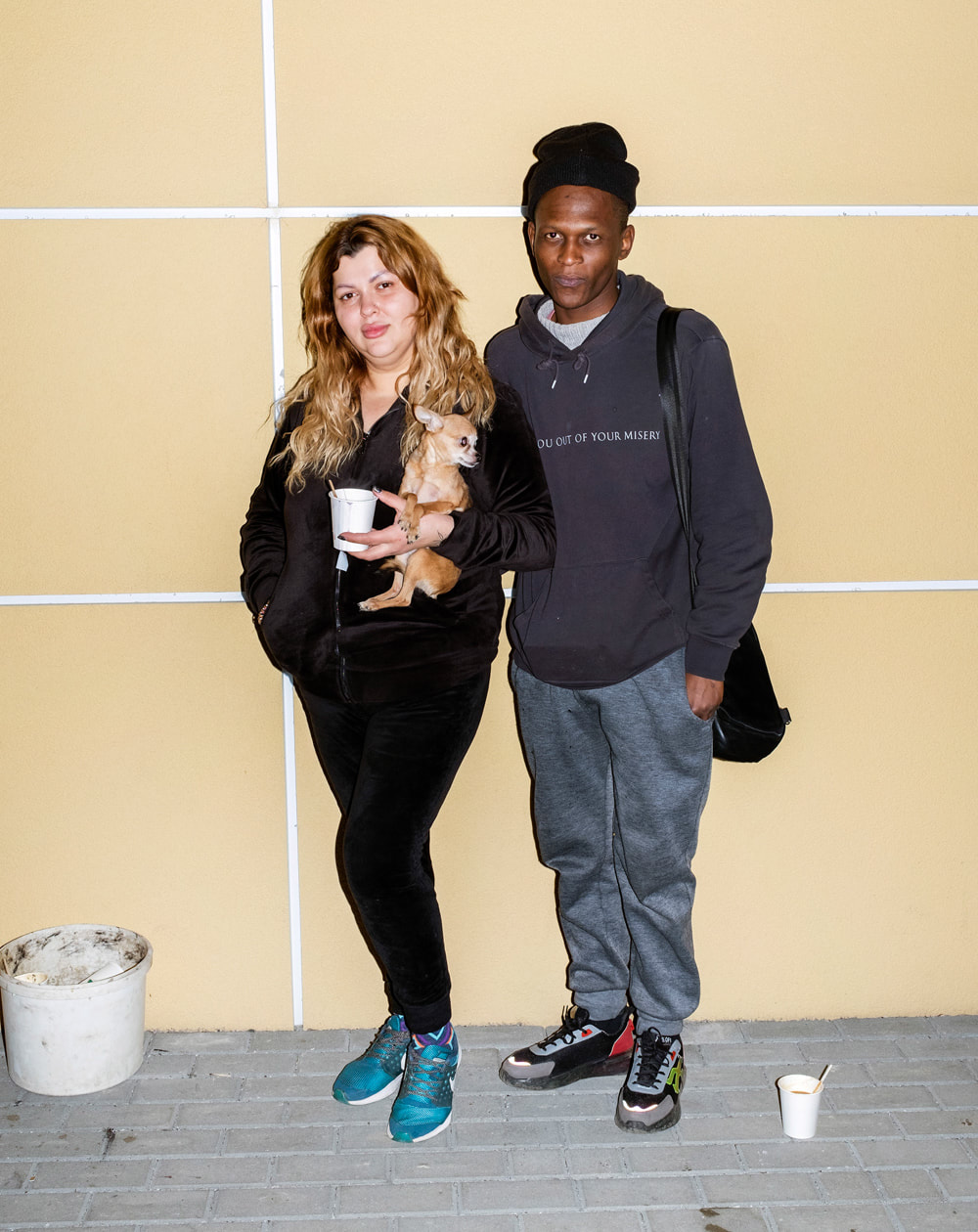This interview has been edited for length and clarity.
|
|
About the PhotographerRafał Milach is a visual artist, activist, photographer and educator. His work focuses on power relations between society and systemic oppression. Author of protest books and critical publications on state control. Milach is a professor at the Krzysztof Kieślowski Film School of Silesian University in Katowice, Poland. He has received scholarships from the Polish Minister of Culture and National Heritage, Magnum Foundation, and European Cultural Foundation. Finalist of the Deutsche Börse Photography Foundation Prize, Polityka Passports Award and a winner of the World Press Photo competition. Co-founder of the Archive of Public Protests and Sputnik Photos collectives. His works have been widely exhibited worldwide, and can be found in the public institutional collections worldwide. Milach is an associate member of Magnum Photos. He is currently photographing Ukrainian refugees on the border and spoke to Alan Govenar via Zoom for this interview. |
|
Alan Govenar: Tell me about your work as a photographer, and how it relates to issues of truth. Or does it?
Rafał Milach: Oh, well, it very much relates to the issue of “truth.” What is the truth? Everyone might have a different answer to this question. Authoritarian regimes for instance produce propaganda, to control and oppress societies. They need to build certain constructs which are true in their view. We're talking about the state propaganda that I've been visually researching for over a decade now, mostly in the region of the former East Bloc, like post-Soviet territory, but not only. So, this is the important part of my practice, and this work has been also dialoguing with photography and how relevant this medium is to tell stories about the world, and if photography, even documentary photography, is able to represent so-called reality. In the meantime, I've been also working on the other side of the barricade, trying to collect various gestures of resistance against these oppressive mechanisms and state-controlled structures. So, it makes my work very much bipolar. On the one hand, I'm trying to work around the state control. On the other hand, I'm trying to collect all that is undermining it, like various protest movements. I’m also testing different methods of how photography can be used in this field.
Govenar: It seems that photography can both be used positively, but it can also be weaponized.
Milach: Absolutely.
Govenar: And now with digital media so easily manipulated, so much of the Russian propaganda is created through artificial intelligence and blogs that aren't even with real people. No one's writing them. A computer is writing them because they're programmed to do this. And at the same time, another deep contradiction that motivated me to want to start Truth in Photography was that art photography, or what people call art photography, has, over the last decade or more, championed the depiction of faux reality. Photographers who stage and create false realities, their work is, as a commodity, worth more than photographers who are out there documenting the real, factual world, and the factual nature of photography has been diminished in value. During what we're going through now, we have to ask, do we really want, as photographers, to give up the ownership of truth to people who are telling lies?
Milach: Yeah, I think it's not only the question of what's going on with the image, but also the way the image is disseminated. I think the major problem now with communication through the images, and not only the images that we're dealing in with the Russian invasion of Ukraine, is that Russians are essentially blocked from information that comes from independent media and the message they get from state controlled media is brutally manipulated. The images of war that our part of the world is seeing everyday don’t gain any platform in Russia and are considered fake. So there is a huge information gap here which has been replaced with propaganda. A lot of Ukrainians that I spoke to used to have close relationships with Russians, and they've been telling me how hard it is to convince their Russian friends or relatives of what's really going on in Ukraine. They tend to believe in the Russian state propaganda rather than people who directly witnessed or suffered from the brutality of this war. The images are helpless in such case, even vernacular records are thrown in the same box as fake news and have become a convenient excuse for denying the war crimes. When it comes to documentary or non-documentary practices, in my view, the main question would be, why do we as visual story tellers use one or another? Creative photography can be used as a powerful platform of communicating about burning social or political issues, and documentary photography can be an empty shell sometimes, so it can work both ways. So, to me, it's rather a question of how to use the images, and for what purposes are we using these various visual strategies? I'm personally using mostly a documentary language to communicate about the contemporary context, but I'm not afraid of conceptual strategies and finding a different path of access to various audiences. Sometimes it’s possible.
Rafał Milach: Oh, well, it very much relates to the issue of “truth.” What is the truth? Everyone might have a different answer to this question. Authoritarian regimes for instance produce propaganda, to control and oppress societies. They need to build certain constructs which are true in their view. We're talking about the state propaganda that I've been visually researching for over a decade now, mostly in the region of the former East Bloc, like post-Soviet territory, but not only. So, this is the important part of my practice, and this work has been also dialoguing with photography and how relevant this medium is to tell stories about the world, and if photography, even documentary photography, is able to represent so-called reality. In the meantime, I've been also working on the other side of the barricade, trying to collect various gestures of resistance against these oppressive mechanisms and state-controlled structures. So, it makes my work very much bipolar. On the one hand, I'm trying to work around the state control. On the other hand, I'm trying to collect all that is undermining it, like various protest movements. I’m also testing different methods of how photography can be used in this field.
Govenar: It seems that photography can both be used positively, but it can also be weaponized.
Milach: Absolutely.
Govenar: And now with digital media so easily manipulated, so much of the Russian propaganda is created through artificial intelligence and blogs that aren't even with real people. No one's writing them. A computer is writing them because they're programmed to do this. And at the same time, another deep contradiction that motivated me to want to start Truth in Photography was that art photography, or what people call art photography, has, over the last decade or more, championed the depiction of faux reality. Photographers who stage and create false realities, their work is, as a commodity, worth more than photographers who are out there documenting the real, factual world, and the factual nature of photography has been diminished in value. During what we're going through now, we have to ask, do we really want, as photographers, to give up the ownership of truth to people who are telling lies?
Milach: Yeah, I think it's not only the question of what's going on with the image, but also the way the image is disseminated. I think the major problem now with communication through the images, and not only the images that we're dealing in with the Russian invasion of Ukraine, is that Russians are essentially blocked from information that comes from independent media and the message they get from state controlled media is brutally manipulated. The images of war that our part of the world is seeing everyday don’t gain any platform in Russia and are considered fake. So there is a huge information gap here which has been replaced with propaganda. A lot of Ukrainians that I spoke to used to have close relationships with Russians, and they've been telling me how hard it is to convince their Russian friends or relatives of what's really going on in Ukraine. They tend to believe in the Russian state propaganda rather than people who directly witnessed or suffered from the brutality of this war. The images are helpless in such case, even vernacular records are thrown in the same box as fake news and have become a convenient excuse for denying the war crimes. When it comes to documentary or non-documentary practices, in my view, the main question would be, why do we as visual story tellers use one or another? Creative photography can be used as a powerful platform of communicating about burning social or political issues, and documentary photography can be an empty shell sometimes, so it can work both ways. So, to me, it's rather a question of how to use the images, and for what purposes are we using these various visual strategies? I'm personally using mostly a documentary language to communicate about the contemporary context, but I'm not afraid of conceptual strategies and finding a different path of access to various audiences. Sometimes it’s possible.
Govenar: I think so, too. But by the act of making a photograph, it's a political act. Photography is not neutral. Photography is a state. It's a point of view. Someone is making it. And that point of view can validate something, or it can diminish the importance of something. Could you talk about a specific series of your work, how it came to be and your process.
Milach: The closest thing to my heart right now, something that I dedicate the most energy to, is The Archive of Public Protests, a platform that I've created with seventeen other photographers, activists, researchers, and artists, from Poland. This platform collects the images of protests in Poland, and this is something which is somewhere in between photojournalism and activism. I’ve always thought these two spaces are contradictory, but the experience I gained within the past few years proved me wrong.
My photography practice had been quite conceptual for several years, and I would say it was quite niche, because of the visual language that I was using. It somehow belonged more to the art world and was operating with metaphors, nuances, a lot of contextual stuff, and texts. All that changed about six years ago. The political landscape in Poland got radicalized since the right-wing government took over the power and we‘ve faced significant intensification of the protests due to violation of human rights and democratic structures. I found photography a very powerful ally of all these movements. Building visual representation of protests is fundamental for contemporary context, but also for future research and analysis. In A-P-P we use a very straightforward visual language appropriated from the press photography format, with the major difference of being neither on assignment nor objectifying the events.
The Archive of Public Protests is an open resource for educators, activists, artists, academics, or any other entities that are contributing to the protest culture. All members of the collective participate in this movement voluntarily, and express the values we stand for in a very open way.
Govenar: What do you photograph on the border? You've been photographing refugees?
Milach: Yes. Since the beginning of the war I’ve been working on the Poland-Ukraine border collecting stories: interviewing refugees and then just photographing them very briefly, because to me these spoken testimonies seem somehow way stronger than the images.
Milach: The closest thing to my heart right now, something that I dedicate the most energy to, is The Archive of Public Protests, a platform that I've created with seventeen other photographers, activists, researchers, and artists, from Poland. This platform collects the images of protests in Poland, and this is something which is somewhere in between photojournalism and activism. I’ve always thought these two spaces are contradictory, but the experience I gained within the past few years proved me wrong.
My photography practice had been quite conceptual for several years, and I would say it was quite niche, because of the visual language that I was using. It somehow belonged more to the art world and was operating with metaphors, nuances, a lot of contextual stuff, and texts. All that changed about six years ago. The political landscape in Poland got radicalized since the right-wing government took over the power and we‘ve faced significant intensification of the protests due to violation of human rights and democratic structures. I found photography a very powerful ally of all these movements. Building visual representation of protests is fundamental for contemporary context, but also for future research and analysis. In A-P-P we use a very straightforward visual language appropriated from the press photography format, with the major difference of being neither on assignment nor objectifying the events.
The Archive of Public Protests is an open resource for educators, activists, artists, academics, or any other entities that are contributing to the protest culture. All members of the collective participate in this movement voluntarily, and express the values we stand for in a very open way.
Govenar: What do you photograph on the border? You've been photographing refugees?
Milach: Yes. Since the beginning of the war I’ve been working on the Poland-Ukraine border collecting stories: interviewing refugees and then just photographing them very briefly, because to me these spoken testimonies seem somehow way stronger than the images.
Govenar: Could you complete the sentence, “Truth in photography is…”
Milach: It's nonexistent. Because there's so many truths, and it’s both personal and collective experience. There are so many different contexts that can twist this experience.
Govenar: Ultimately, what we perceive to be true is a feeling. It’s something that we sense. It's not in the picture, it's the viewer or the maker that imbues the truth.
Milach: Yeah, I mean, it's absolutely not an objective thing. I would say the truth is equal to an opinion and there is no objective logic in it. It's kind of interesting, because I recently sued the national Polish television for stealing and using one of my protest images in a different and offensive context. They didn’t care about what was included in the source caption of the picture and completely twisted the meaning of the photographed scene. Not a surprising thing given the fact that Polish TV is a main propaganda tube for the right-wing populist government.
Govenar: It’s completely dangerous.
Milach: Yes, and it’s still an influential media outlet, unfortunately, so it's ultimately dangerous. We’ve had a few hearings so far, and listening to what the opposite side had to say in terms of what in their view the image represented was outrageous. So, the truth is a quite arbitrary thing, I would say.
Govenar: What is the picture?
Milach: It’s a picture I took during one of the LGBTQ+ peaceful protests where a police officer is pushing one of the protesters to the ground. It was not long after George Floyd’s death so the image resonated quite strongly. It became viral and started a discussion about police brutality in Poland and homophobic policy of the ruling government. Of course state controlled media outlets presented the event in a totally different light.
Milach: It's nonexistent. Because there's so many truths, and it’s both personal and collective experience. There are so many different contexts that can twist this experience.
Govenar: Ultimately, what we perceive to be true is a feeling. It’s something that we sense. It's not in the picture, it's the viewer or the maker that imbues the truth.
Milach: Yeah, I mean, it's absolutely not an objective thing. I would say the truth is equal to an opinion and there is no objective logic in it. It's kind of interesting, because I recently sued the national Polish television for stealing and using one of my protest images in a different and offensive context. They didn’t care about what was included in the source caption of the picture and completely twisted the meaning of the photographed scene. Not a surprising thing given the fact that Polish TV is a main propaganda tube for the right-wing populist government.
Govenar: It’s completely dangerous.
Milach: Yes, and it’s still an influential media outlet, unfortunately, so it's ultimately dangerous. We’ve had a few hearings so far, and listening to what the opposite side had to say in terms of what in their view the image represented was outrageous. So, the truth is a quite arbitrary thing, I would say.
Govenar: What is the picture?
Milach: It’s a picture I took during one of the LGBTQ+ peaceful protests where a police officer is pushing one of the protesters to the ground. It was not long after George Floyd’s death so the image resonated quite strongly. It became viral and started a discussion about police brutality in Poland and homophobic policy of the ruling government. Of course state controlled media outlets presented the event in a totally different light.
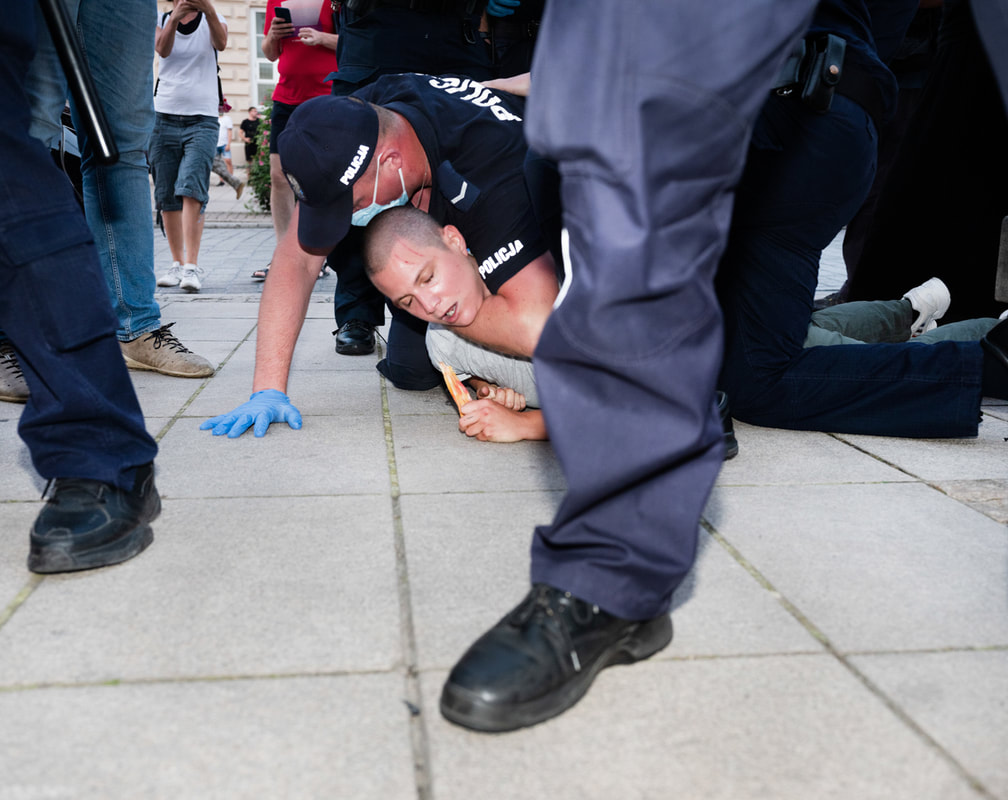
Protester pushed to the ground by the police officer. Protest against arrest order of LGBT activist Margo accused of causing damage in June to a truck promoting false anti-LGBT propaganda. Hundreds of people protested against homophobia and discrimination. Protest has been brutally pacified by the police. Warsaw, Poland, August 7, 2020. © Rafał Milach / Magnum Photos
Govenar: I think that very much speaks to what we're talking about. And how the iconic photograph can be twisted. Is the court case still pending?
Milach: At the beginning of April, I should hear the verdict.
Govenar: Well, I wish you the best with that. Jumping back to your work that you've been doing with refugees, a comment you made was interesting, that you felt like the stories were more important than the images, in some cases.
Milach: I would say in almost all cases. These spoken testimonies deliver the context, and people’s stories, in a way more descriptive way than pictures. And this was not a moment for metaphors or abstract constructs. The message had to be very simple so people could understand the circumstances, the context, and ultimately the level of manipulation of Russian propaganda. It's the testimony of people who lived through this experience, that you can connect to on the emotional level as well. And it's on such a massive scale. It was just heartbreaking. I have been basically crying with these people all the time listening about their traumas. It all happened at the moment when they were crossing the border. So, it’s quite un-human on the one side. On the other side, their urge to share the stories has been even stronger than the extreme tiredness and exhaustion they experienced for the past few weeks. I've never experienced such a strong emotional sharing. The conditions are extreme, so the emotions are extreme, and the trauma is so fresh. Sometimes I had the feeling that people just wanted to share this load with someone. Sometimes I was the first person they could speak to. In many cases they were strangely thankful for that. It's not about me, it's about them getting to be heard and processing the trauma. Even when you ask them super basic questions, “Where did you come from?” or “When did you have to leave your town?” All of a sudden, people start to tell you stories about the shellings, about how they were hiding in the basement for several days, or how they separated from their relatives. And they start to cry.
Milach: At the beginning of April, I should hear the verdict.
Govenar: Well, I wish you the best with that. Jumping back to your work that you've been doing with refugees, a comment you made was interesting, that you felt like the stories were more important than the images, in some cases.
Milach: I would say in almost all cases. These spoken testimonies deliver the context, and people’s stories, in a way more descriptive way than pictures. And this was not a moment for metaphors or abstract constructs. The message had to be very simple so people could understand the circumstances, the context, and ultimately the level of manipulation of Russian propaganda. It's the testimony of people who lived through this experience, that you can connect to on the emotional level as well. And it's on such a massive scale. It was just heartbreaking. I have been basically crying with these people all the time listening about their traumas. It all happened at the moment when they were crossing the border. So, it’s quite un-human on the one side. On the other side, their urge to share the stories has been even stronger than the extreme tiredness and exhaustion they experienced for the past few weeks. I've never experienced such a strong emotional sharing. The conditions are extreme, so the emotions are extreme, and the trauma is so fresh. Sometimes I had the feeling that people just wanted to share this load with someone. Sometimes I was the first person they could speak to. In many cases they were strangely thankful for that. It's not about me, it's about them getting to be heard and processing the trauma. Even when you ask them super basic questions, “Where did you come from?” or “When did you have to leave your town?” All of a sudden, people start to tell you stories about the shellings, about how they were hiding in the basement for several days, or how they separated from their relatives. And they start to cry.
|
|
Delve deeper |

